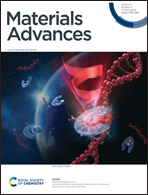Efficient photocatalytic chloride dehalogenation by planar conjugated microporous polymers with enhanced charge separation and transport†‡
Abstract
Conjugated microporous polymers (CMPs) exhibiting semiconductor properties have been widely employed as heterogeneous photocatalysts. Photogenerated charge carrier separation and transfer are crucial factors influencing the performance of such photocatalysts. Typically, the electron/acceptor units linked by carbon–carbon single bonds tend to form larger dihedral angles due to steric hindrance, thus inhibiting the transport of charge carriers, leading to recombination of photogenerated electro-hole pairs and consequently limiting the photocatalytic performance of the material. Based on this, we designed two CMPs, one with a planar structure, dibenzo[g,p]chrysene (DBC), and the other with a non-planar structure, tetraphenylethylene (TPE), to investigate the influence of planarity on the catalytic performance of the materials. Theoretical simulation results reveal that CMP-DBC, with its planar structure, has a significantly smaller dihedral angle for the electron donor (18.4°) compared to CMP-TPE (47.8°). According to calculations from temperature-dependent fluorescence spectroscopy, the exciton binding energy of the former (108 meV) is also smaller than that of the latter (126 meV). In the photocatalytic dehalogenation reaction, CMP-DBC achieves nearly 100% halide product yield, far surpassing the 60% yield of CMP-TPE. Both theoretical and experimental results indicate that CMP-DBC, with its smaller donor–acceptor dihedral angle, facilitates charge carrier migration, effectively suppressing rapid radiative recombination, and thus exhibits superior photocatalytic performance.



 Please wait while we load your content...
Please wait while we load your content...